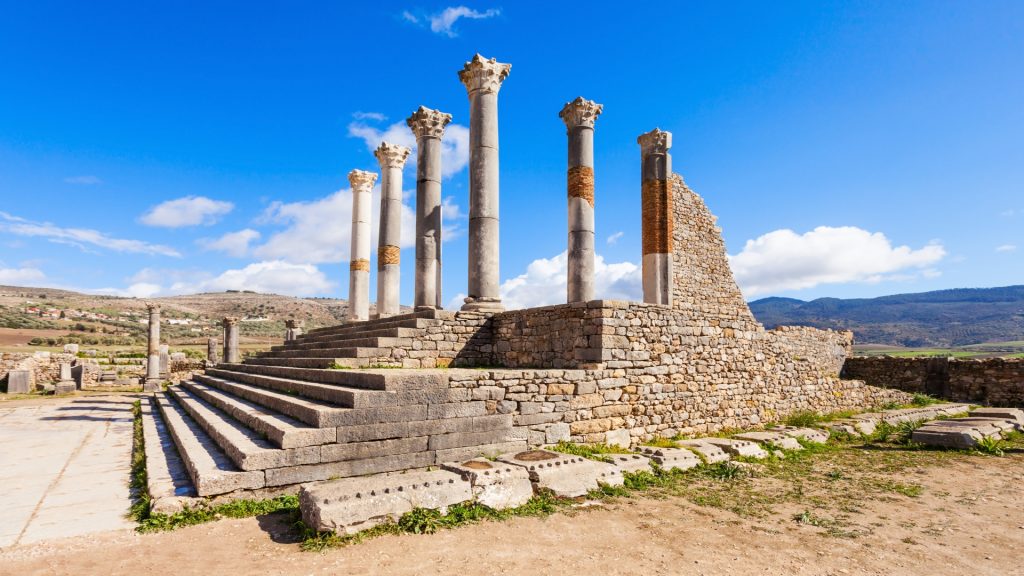Chefchaouen – Morocco’s “Blue City”
Among our favorite stopovers in Morocco, this artsy, blue-washed mountain village of 45,000 is uniquely beautiful, set against the dramatic backdrop of the Rif Mountains. Chefchaouen medina is certainly one of the loveliest in all of Morocco, small and uncrowded, easy to explore. Chefchaouen was founded in 1471 and dominated the merchant route between Tétouan and Fez. The city prospered during the 15th and 17th when the Moriscos (i.e. Muslims converted to Christianity) and Jews arrived, after being expelled from Spain. Chefchaouen was later painted blue by Jewish refugees in the 1930s fleeing Nazi oppression. In Judaism, blue represents the sky and heavens – the blue colors reminding all to live a life of spiritual awareness. It is also believed that blue acts as an effective mosquito repellent! Interestingly, the adjacent countryside is known for being an abundant source of cannabis, with hashish widely sold in Chefchaouen (!) Wool garments and woven blankets are the shopping opportunities here.
Volubilis (UNESCO World Heritage Site)
Approx. 33 km/20 mi from Meknes (between Rabat and Fez), the Roman ruins of Volubilis are considered the best-preserved site in Morocco. One of the most impressive features is its beautiful mosaics preserved on site. During the rule of King Juba II, from approximately 32 BC to 40 AD, Volubilis was the capital of the Mauritania kingdom and a major producer of olives and grain. Volubilis grew to become an important commercial center, as well as the seat of power for the Roman Empire in North America. After the Romans left the area in the third century, Volubilis continued to thrive as a trading center, until it met its end in an earthquake in the fourth century.
Historic City of Meknes (UNESCO World Heritage Site)
Of Morocco’s four imperial cities (Rabat, Fez, Meknes, and Marrakech), UNESCO World Heritage Site Meknes is certainly the smallest and much less visited vs. the others. The city reflects elements of Arab and European cultures integrated into its beautifully restored architecture. Founded in the 11th century by the Almoravids as a military settlement, Meknes became a capital under Sultan Moulay Ismaïl (1672-1727), the founder of the Alawite dynasty. The sultan turned it into an impressive city in Spanish-Moorish style, surrounded by high walls with great doors, where the harmonious blending of the Islamic and European styles of the 17th century Maghreb are still evident today.
Meknes was built under the rule of the Almoravid dynasty, which governed the area from 1053 to 1147. The city was constructed around the Nejjarine Mosque and was originally built as a place to warehouse weapons and food for the Almoravid army. Markets formed around the mosque and Meknes became a center for trading metal goods, wood products, and firearms. The original city of Meknes was not fortified. Because of its extreme vulnerability, the Almohad dynasty easily conquered and destroyed the city and went on to rule the area from 1147 to 1269.
The Almohad’s rebuilt Meknes to create the city that stands today. Their design called for a modern municipality, which included high walls and a plumbing system that delivered water to public fountains and baths. Subsequent rulers expanded the city from the 13th to the 18th centuries. The Marinid dynasty built libraries, hospitals, mosques, and madrasas. Under Moulay Ismaïl’s rule, city planners added gardens, stables, cisterns, and mausoleums. Meknes grew to be so large and powerful that it became the capital of Morocco during Moulay Ismaïl’s rule.
Many of Meknes’ historic buildings remain beautifully preserved today. Historical highlights of the city include the Medina of Meknes Mosque, Mausoleum of Moulay Ismaïl, and nearly 30 fortress gates. Outside the historic center, Meknes thrives as a modern city and is home to nearly one million people.
